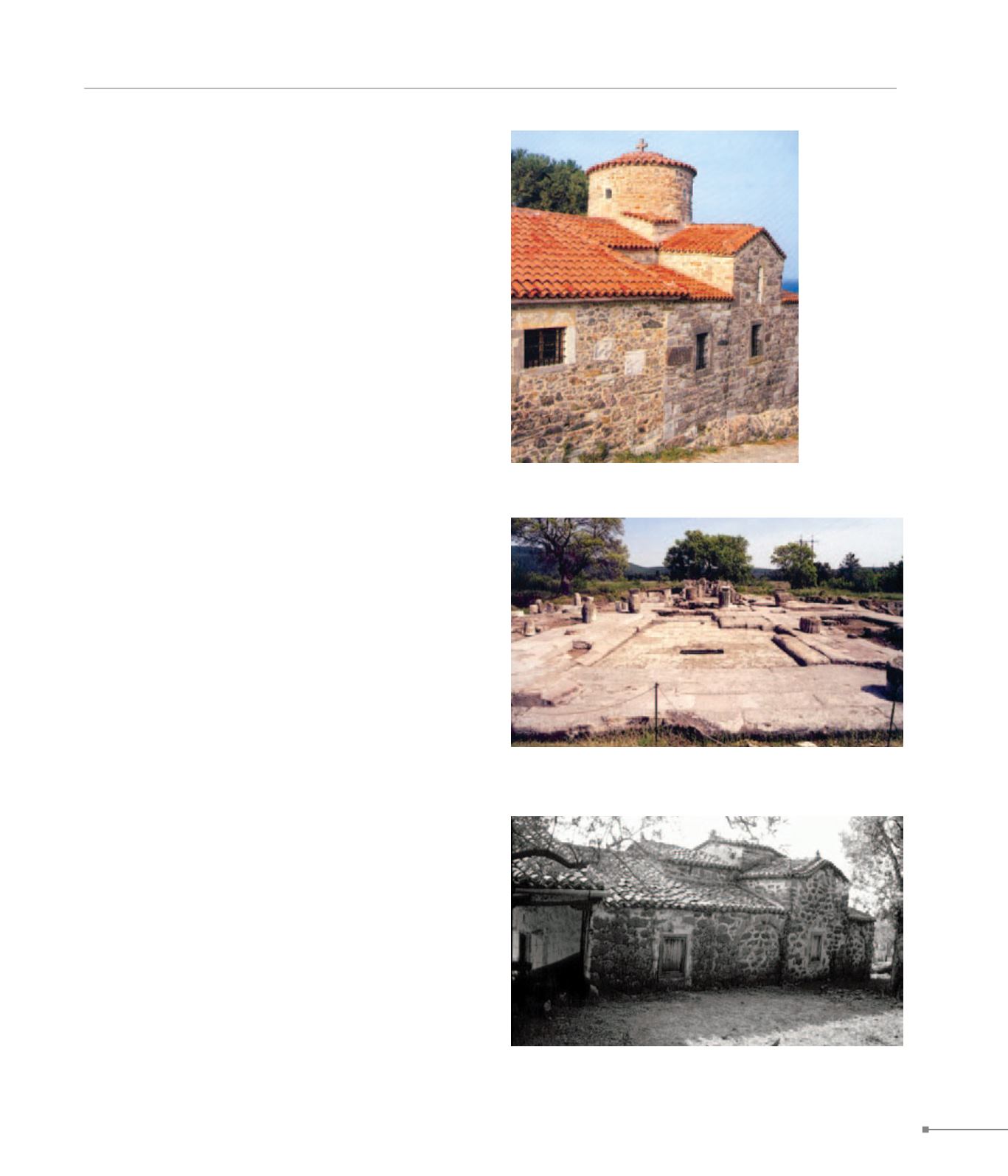
Lesbos.
Lesbos.
THE ISLANDS
321
572. Lesbos, Mantmado, Aghios Stephanos (Λέσβος, Μανταμάδο, Άγιος
Στέφανος)
572. Lesbos, Mesa basilica (Λέσβος, Μέσα, βασιλική)
572. Lesbos,
Thermi, Panagia
Trouloti (Λέσβος,
Θέρμη, Παναγία
Τρουλωτή)
Panagia Chapel at “Enthrono” Site, Lambou Myloi. (8)
At the “Enthrono” site in the village of Lambou Myloi the ru-
ins of a small church dedicated to Panagia survive at a good
height. Judging from the masonry, which was of the cloisonné
type, it dated from the Byzantine period. An Early Christian
basilica had already stood at the same site. The sherds that
are scattered throughout the area attest its inhabitation in the
Early Christian period.
Thermi. (9)
Panagia Tourlote is located at Ano Pyrgoi, Thermi. It is a sim-
ple, four-columned, cross-in-square church with a cylindrical
dome and later narthex. The masonry features spolia. The es-
tablishment of the church is placed at 14th-15th c., though
recently it has been suggested that it be dated to the 10th c.
Very few remains of wall-paintings survive.
Magnisalis Τower. (10)
The Magnisalis tower, located at Loutropolis Thermis, dis-
plays features of tower houses. Constructed of reddish stone,
it consists of a ground floor and three storeys. The design of
the stone corbels and the pointed arches may safely date the
tower between the late 14th and early 15th c., as they are typi-
cal characteristics of the military architecture introduced into
the Aegean by the Genoese and the Knights Hospitaller.
Kalamos. (11)
The ruined church of Saint Nicholas at Kalamos is located N
of Mistegna and was the parish church of an extensive Late
Byzantine settlement that can be safely identified with Cydona
(Cydonia).
Mesa. (12)
On the crepis of the ancient sanctuary’s temple at Mesa, on
the Gulf of Kalloni, an Early Christian basilica was built with re-
used ancient material. Today there survive the large polygonal
apse of the bema, part of its floor and scattered architectural
elements (bases of columns, capitals, mullions, panels from
the chancel screen and the ambo, etc.). The site was in use
in the 10th, 11th and 14th c., as attested by numismatic finds.
Most probably it was the cemetery of a medieval village whose
ruins have been detected at a distance of 300 m NW, and
perhaps this is the reason why the locality has been named
“Kokkala” or “Koukala” (bones).
Chalinados Basilica. (13)
The Early Christian basilica at Chalinados, located SE of
Aghia Paraskevi village, was possibly the catholicon of a small
monastery, as indicated by the remains of cell walls surviving
to its S. It is a three-aisled, timber-roofed basilica with semi-
circular apse and narthex. The main church is of an almost
quadrilateral plan. The colonnades are on a high stylobate;
the columns were made of domestic reddish limestone. Judg-
ing by the sculpted decoration and a copper coin (587-8) of
Byzantine Emperor Maurice Tiberius, the basilica dates from
the second half of the 6th c.


